Window and Siding Replacement Contractor Raleigh NC
Window Siding Replacement Raleigh NC – Statewide Construction LLC provides custom window and siding installation in Raleigh NC, improving both style and performance. From replacing aging windows to updating faded siding or renovating the full exterior, our team delivers precise installation, energy-efficient windows Raleigh NC, vinyl siding installation Raleigh NC, fiber cement siding Raleigh NC, and rotted wood siding replacement Raleigh NC. We focus on lasting curb appeal, reliable workmanship, and personalized service for a durable exterior upgrade.
Get in Touch Today!
Window and Siding Replacement in Raleigh NC | Boost Curb Appeal & Energy Efficiency
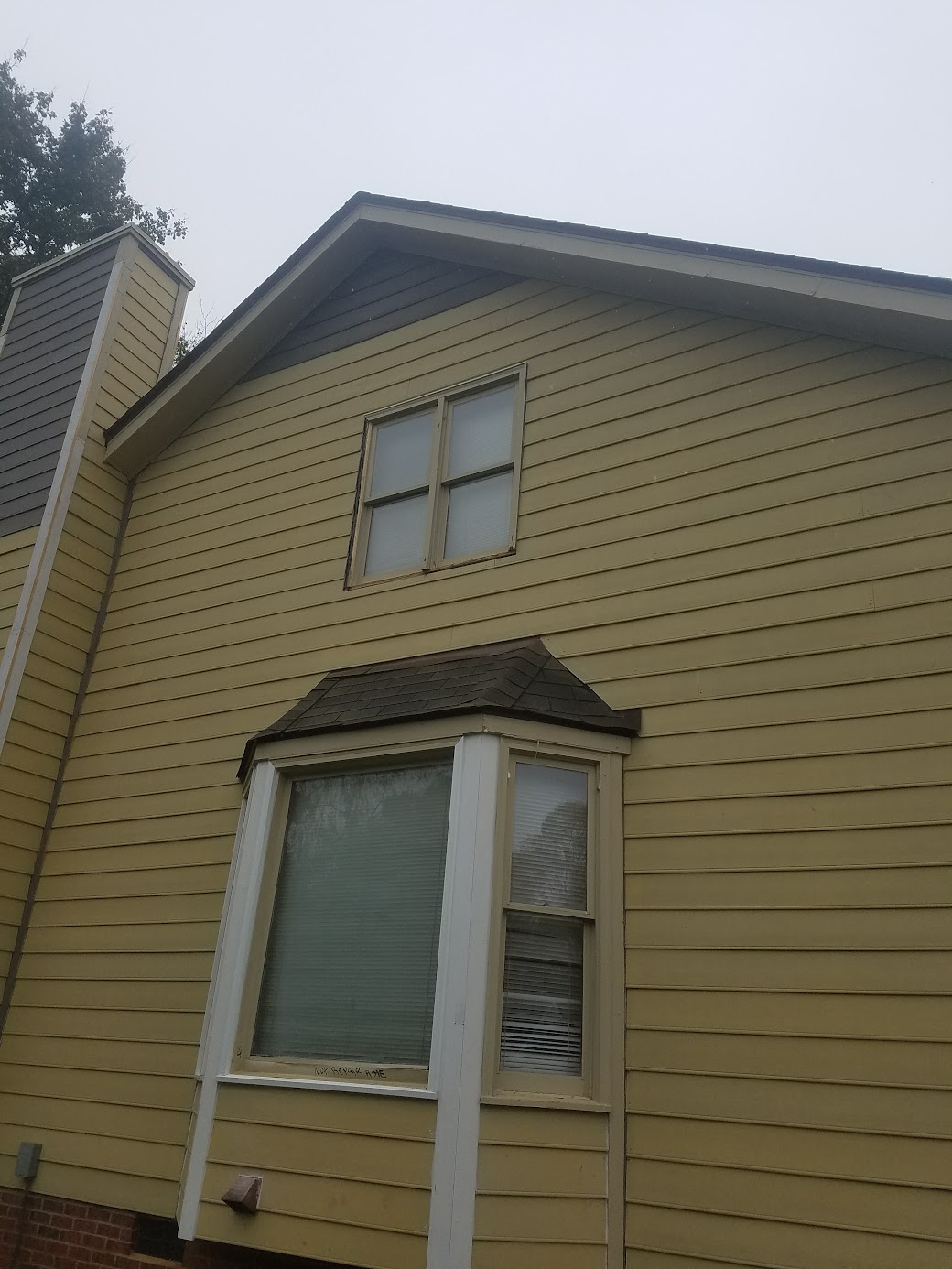
Window and Siding Replacement in Raleigh NC | Boost Curb Appeal & Energy Efficiency
Window Siding Replacement Raleigh NC – At Statewide Construction LLC, we specialize in high-quality window and siding replacements in Raleigh, NC that dramatically improve your home’s comfort, curb appeal, and energy efficiency. Whether you’re upgrading outdated materials, addressing wear and tear, or modernizing your home’s exterior, our expert team provides precision installation of energy-efficient windows Raleigh NC, vinyl siding installation Raleigh NC, fiber cement siding Raleigh NC, and rotted wood siding replacement Raleigh NC. Every project is tailored to your home’s style and your personal needs, ensuring long-lasting performance and a stunning exterior upgrade.
Upgrade Your Home’s Exterior with Confidence
Window Siding Replacement Raleigh NC is more than a cosmetic upgrade—it’s a smart investment in your home’s protection, energy efficiency, and long-term value. As leading exterior home improvement contractors in Raleigh, we provide a wide selection of durable, low-maintenance siding options and energy-efficient windows Raleigh NC to suit any home and budget. From the initial Raleigh window replacement consultation to the final installation, Statewide Construction LLC ensures every detail is handled with precision, giving you confidence in a job done right.
A key differentiator in our vinyl siding installation Raleigh NC and fiber cement siding Raleigh NC process is our meticulous attention to moisture protection. We are one of the few contractors in Raleigh who consistently install flashing behind every siding butt joint. This extra barrier prevents water penetration, protecting your home’s structure from rot, mold, and costly damage. While many installers skip this crucial step, we ensure long-term integrity and performance for your rotted wood siding replacement Raleigh NC and all exterior upgrades.
Why Replace Your Windows & Siding? The Smart Investment for Raleigh Homeowners
Upgrading your windows and siding with Window Siding Replacement Raleigh NC is one of the smartest investments you can make for your home. Not only does it boost curb appeal, but it also improves energy efficiency, indoor comfort, and long-term property value. Here’s why homeowners in Raleigh choose these essential upgrades:
1. Improve Energy Efficiency:
Modern windows featuring double-pane or triple-pane glass and insulated siding—such as vinyl siding installation Raleigh NC or fiber cement siding Raleigh NC—help regulate indoor temperatures more effectively. This can lead to significant reductions in heating and cooling costs, providing energy savings for your Raleigh home.
2. Enhance Curb Appeal:
New windows and siding replacement Raleigh NC instantly refresh your home’s exterior, giving it a clean, modern, and well-maintained appearance. Options range from classic vinyl siding installation Raleigh NC to modern fiber cement siding Raleigh NC, ensuring your home makes a lasting impression.
3. Increase Home Value:
High-quality upgrades are attractive to potential buyers and can significantly raise resale value. Investing in windows for home value and Window Siding Replacement Raleigh NC provides excellent ROI in Raleigh’s competitive real estate market.
4. Reduce Maintenance:
Durable materials like low-maintenance vinyl siding and composite windows require less upkeep than older alternatives. Say goodbye to frequent painting or costly repairs.
5. Fix Damage or Deterioration:
Replacing rotting siding, drafty old windows, or cracked materials protects your home from moisture and pests. We specialize in rotted wood siding replacement Raleigh NC and drafty window repair and replacement, ensuring your home remains safe, secure, and beautiful.
Why Replace Your Windows & Siding? The Smart Investment for Raleigh Homeowners
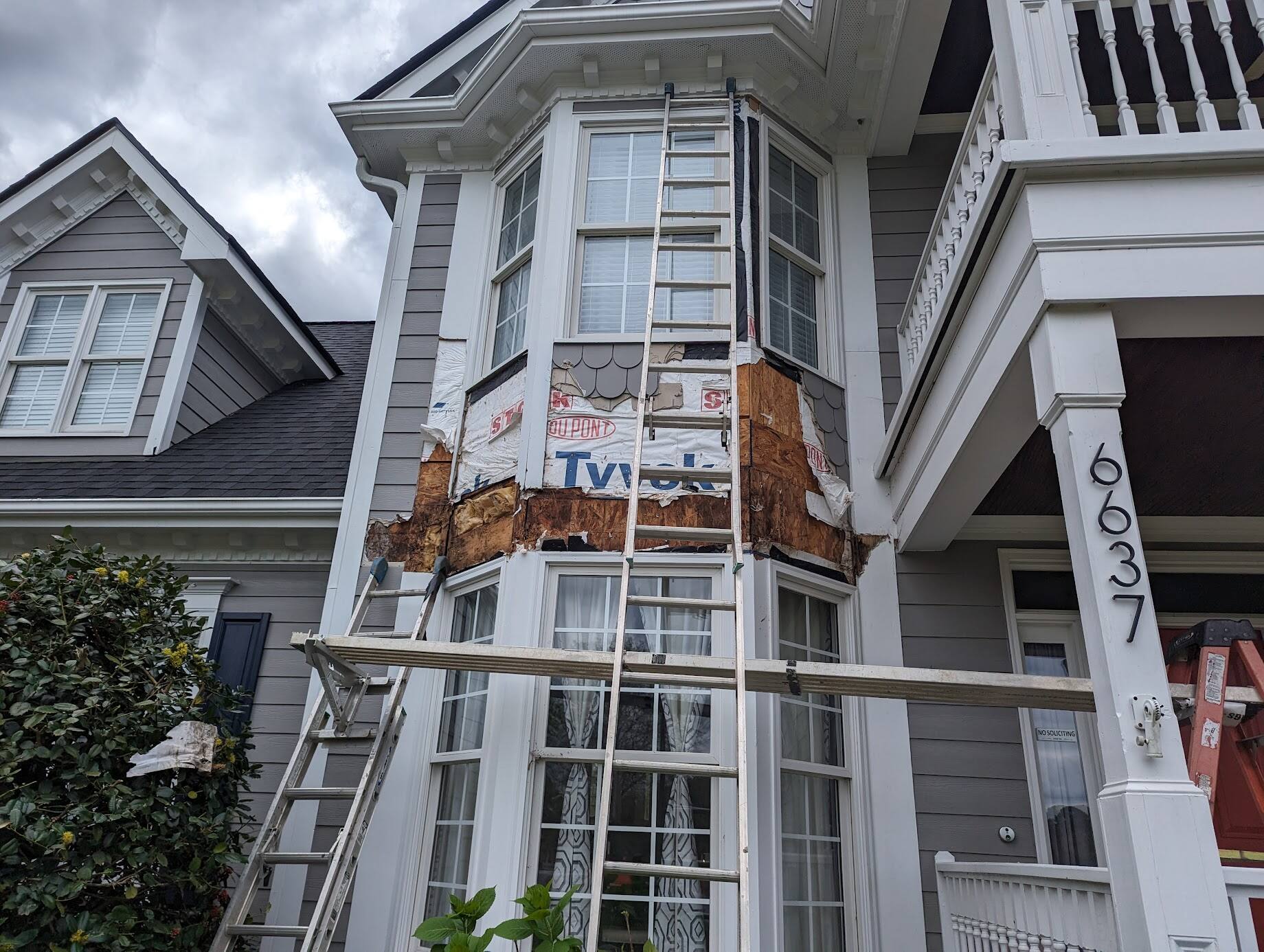
Our Process
At Statewide Construction LLC, we make your Window Siding Replacement Raleigh NC project smooth, efficient, and tailored to your home’s unique needs. Here’s how we bring your exterior upgrade to life:
1. Free Consultation
We begin by meeting with you to understand your goals, assess your current windows and siding, and provide expert recommendations for energy-efficient windows Raleigh NC, vinyl siding installation Raleigh NC, fiber cement siding Raleigh NC, or rotted wood siding replacement Raleigh NC.
2. Product Selection
Our team helps you choose from a variety of high-performance window styles and siding materials. Whether you prefer vinyl, fiber cement, or energy-efficient glass, we guide you to the best options for your Raleigh home exterior upgrade.
3. Detailed Proposal & Scheduling
Once selections are made, we provide a clear, itemized proposal and set a project timeline that works for you. We also prepare your home and coordinate any necessary permits for a seamless window siding replacement Raleigh NC project.
4. Expert Installation
Our licensed crew removes old materials and installs your new windows and siding with precision. We prioritize weatherproofing, insulation, and clean, finished results that last for years, ensuring your home looks beautiful and performs efficiently.
5. Final Walkthrough & Cleanup
We inspect every detail, confirm your satisfaction, and leave your property clean and refreshed. With Statewide Construction, your window siding replacement Raleigh NC is completed with professionalism, quality craftsmanship, and peace of mind.
Call us today at (919) 795-9702 or click below to request your free estimate and get the process started.
Our Process
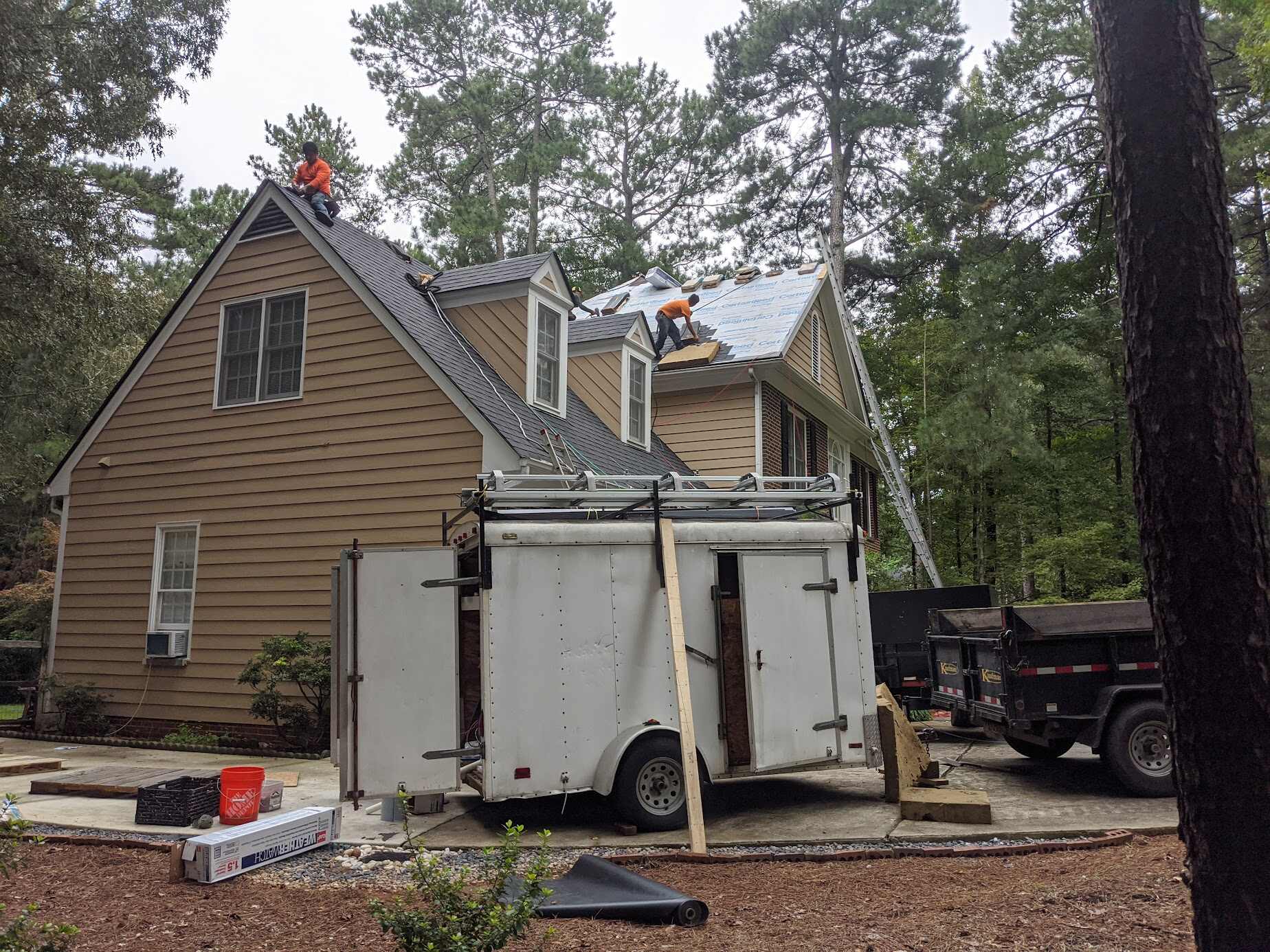
Frequently Asked Questions
Yes! Modern windows and siding replacement Raleigh NC are specifically designed with advanced insulation and thermal performance in mind. High-quality windows, including energy-efficient windows Raleigh NC, feature double-pane or triple-pane glass with low-E coatings that minimize heat transfer, reduce drafts, and maintain comfortable indoor temperatures year-round.
When paired with properly installed siding—whether vinyl siding installation Raleigh NC, fiber cement siding Raleigh NC, or rotted wood siding replacement Raleigh NC—your home gains an additional layer of insulation. This combination helps prevent air leaks, reduces energy loss, and significantly lowers heating and cooling costs.
Beyond energy savings, upgrading your windows and siding improves indoor comfort, ensuring that rooms remain cooler in the summer and warmer in the winter. Proper installation also protects your home from moisture intrusion, drafts, and potential damage to your walls or structure, which can further affect energy efficiency.
By investing in professional window siding replacement Raleigh NC, you not only save on utility bills but also enhance your home’s long-term durability, value, and curb appeal. At Statewide Construction LLC, we ensure every installation meets the highest standards of performance, efficiency, and aesthetics.
The timeline for window siding replacement Raleigh NC varies depending on the scope of the project, the type of materials used, and the complexity of your home’s design.
For most window installations, the process typically takes 1–2 days per room or set of windows. Factors such as custom sizes, energy-efficient upgrades, or structural modifications can extend the installation time slightly, but our experienced team ensures efficient and precise work for every project. Choosing energy-efficient windows Raleigh NC may require extra care to guarantee proper sealing and insulation, which ultimately enhances performance and durability.
Siding replacement projects generally take 1–2 weeks for the average-sized home. The timeline depends on the material selected, such as vinyl siding installation Raleigh NC, fiber cement siding Raleigh NC, or rotted wood siding replacement Raleigh NC, as well as the overall square footage and any additional exterior details, like trim work or custom features. Proper preparation—including inspection, old siding removal, and weatherproofing—ensures long-lasting results.
At Statewide Construction LLC, we provide a detailed project schedule during your initial consultation, so you know exactly what to expect. Our goal is to minimize disruption while delivering high-quality window siding replacement Raleigh NC that is completed on time and to the highest standards of craftsmanship.
At Statewide Construction LLC, we provide a comprehensive selection of high-quality windows and siding for window siding replacement Raleigh NC, tailored to fit every home style, budget, and performance requirement.
For windows, we offer:
Vinyl windows – Low-maintenance, durable, and energy-efficient, ideal for Raleigh homes seeking a modern yet practical solution.
Wood windows – Classic, natural beauty that adds warmth and timeless elegance, perfect for homeowners prioritizing aesthetics.
Composite windows – Combines the durability of synthetic materials with the natural look of wood, offering excellent energy performance and low upkeep.
For siding, we provide:
Vinyl siding installation Raleigh NC – Low-maintenance, weather-resistant, and available in a wide range of colors and textures.
Fiber cement siding Raleigh NC – Extremely durable, resistant to moisture and pests, and ideal for long-term curb appeal.
Engineered wood siding – Offers the look of traditional wood with enhanced resistance to rot, insects, and environmental wear.
Every material we select is chosen for durability, style, and energy performance, ensuring that your window siding replacement Raleigh NC enhances both the aesthetics and efficiency of your home. Our team works closely with you to match your home’s architecture and personal preferences while maximizing long-term performance and value.
Yes! At Statewide Construction LLC, we offer flexible financing options to make window siding replacement Raleigh NC more affordable and accessible for homeowners. We understand that upgrading your home’s windows and siding is a significant investment, and our goal is to provide solutions that fit a variety of budgets without compromising quality.
During your free consultation, our team will walk you through all available financing plans, helping you understand terms, interest rates, and monthly payment options. Whether you are investing in energy-efficient windows Raleigh NC, vinyl siding installation Raleigh NC, fiber cement siding Raleigh NC, or rotted wood siding replacement Raleigh NC, we ensure you have clear, transparent choices to fund your project comfortably.
Financing makes it possible to upgrade your home’s exterior now while spreading the cost over time, so you don’t have to delay essential improvements. With professional installation and high-quality materials, your window siding replacement Raleigh NC will increase energy efficiency, reduce maintenance costs, and enhance your home’s curb appeal and value.
By choosing Statewide Construction LLC, you gain:
Expert guidance on selecting the right materials for your home.
A clear understanding of financing plans tailored to your project.
Peace of mind knowing your investment in window siding replacement Raleigh NC will provide long-term performance and aesthetic value.
Absolutely. New windows and siding not only boost curb appeal but also improve energy efficiency and protection—making your home more attractive to buyers and increasing overall value. As an NC Licensed General Contractor, Statewide Construction LLC ensures every installation meets the highest standards of craftsmanship and compliance.
Why Replace Your Windows & Siding
At Statewide Construction LLC, we make your window and siding replacement project smooth, efficient, and tailored to your home’s needs. Here’s how we bring your exterior upgrade to life:
1. Free Consultation
We start by meeting with you to understand your goals, assess your current windows and siding, and offer expert recommendations that suit your home, style, and budget.
2. Product Selection
Our team helps you choose from a variety of high-performance window styles and siding materials. Whether you prefer vinyl, fiber cement, or energy-efficient glass, we guide you to the best fit.
3. Detailed Proposal & Scheduling
Once selections are made, we provide a clear, itemized proposal and set a project timeline that works for you. We also prepare your home and coordinate any necessary permits.
4. Expert Installation
Our licensed crew removes old materials and installs your new windows and siding with precision. We prioritize weatherproofing, insulation, and clean, finished results that last.
5. Final Walkthrough & Cleanup
We inspect every detail, make sure you’re completely satisfied, and leave your property clean and refreshed. Your peace of mind is our top priority.
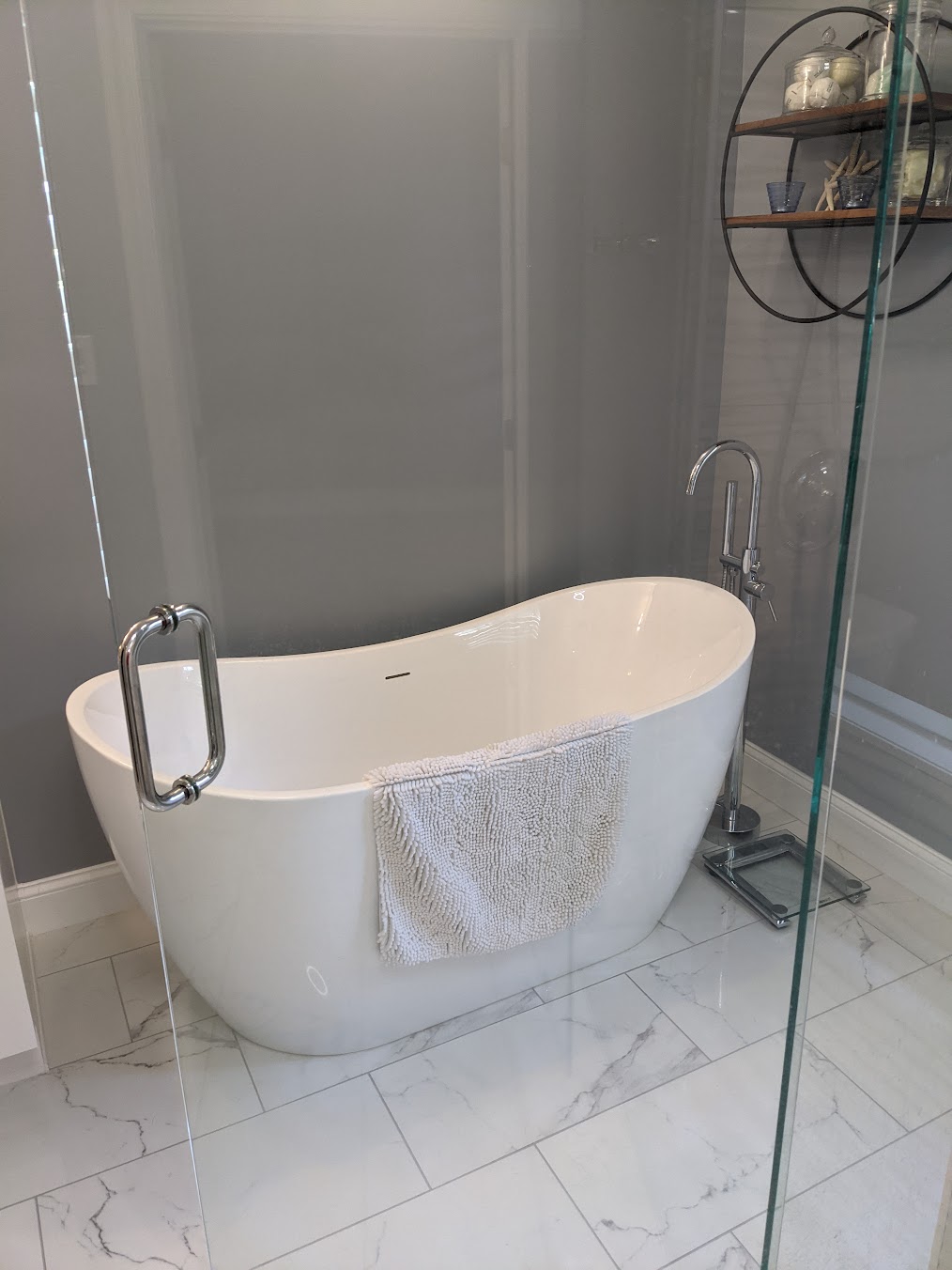
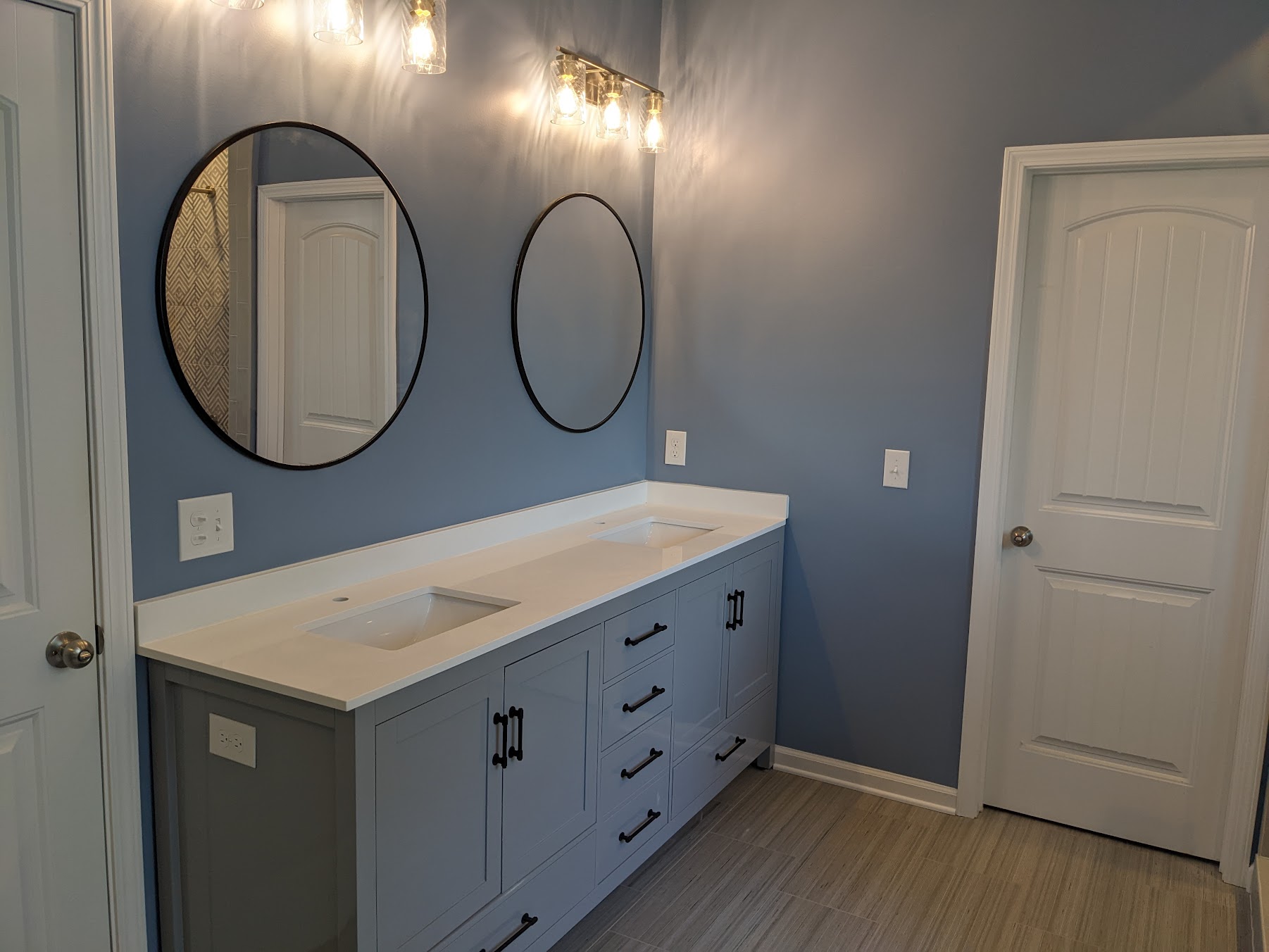
Cabinetry
In bathroom remodeling, cabinetry plays a key role in both form and function. From storing daily essentials to defining the room’s aesthetic, the right cabinetry enhances organization while elevating the overall design of the space.
Vanities and built-in storage units come in a wide variety of styles, materials, and finishes to complement any bathroom layout. Whether you prefer the clean lines of modern cabinetry or the charm of traditional wood finishes, your choice should balance visual appeal with moisture resistance and durability. Features like soft-close drawers, floating vanities, and custom shelving can add both convenience and elegance.
When selecting bathroom cabinetry, consider how much storage you need, the space available, and the look you want to achieve. At Statewide Construction LLC, we help you choose and install cabinetry that blends style and practicality—tailored perfectly to your lifestyle and space.
Counter Tops
When updating your bathroom, countertops are an essential element that add both function and visual appeal. They provide a durable work surface while also serving as a key design feature that ties your vanity, cabinetry, and overall style together.
Popular materials for bathroom countertops include quartz, granite, and solid surface options, each offering a unique blend of durability, resistance to moisture, and easy maintenance. Quartz is a favorite for its non-porous, low-maintenance qualities, while granite adds a natural, high-end look. For a more budget-friendly yet attractive option, solid surface materials deliver versatility and seamless design.
When choosing your bathroom countertop, consider how much use the space will get, your design style, and the level of upkeep you’re comfortable with. At Statewide Construction LLC, we guide you in selecting the right countertop solution that enhances both the performance and appearance of your newly remodeled bathroom.
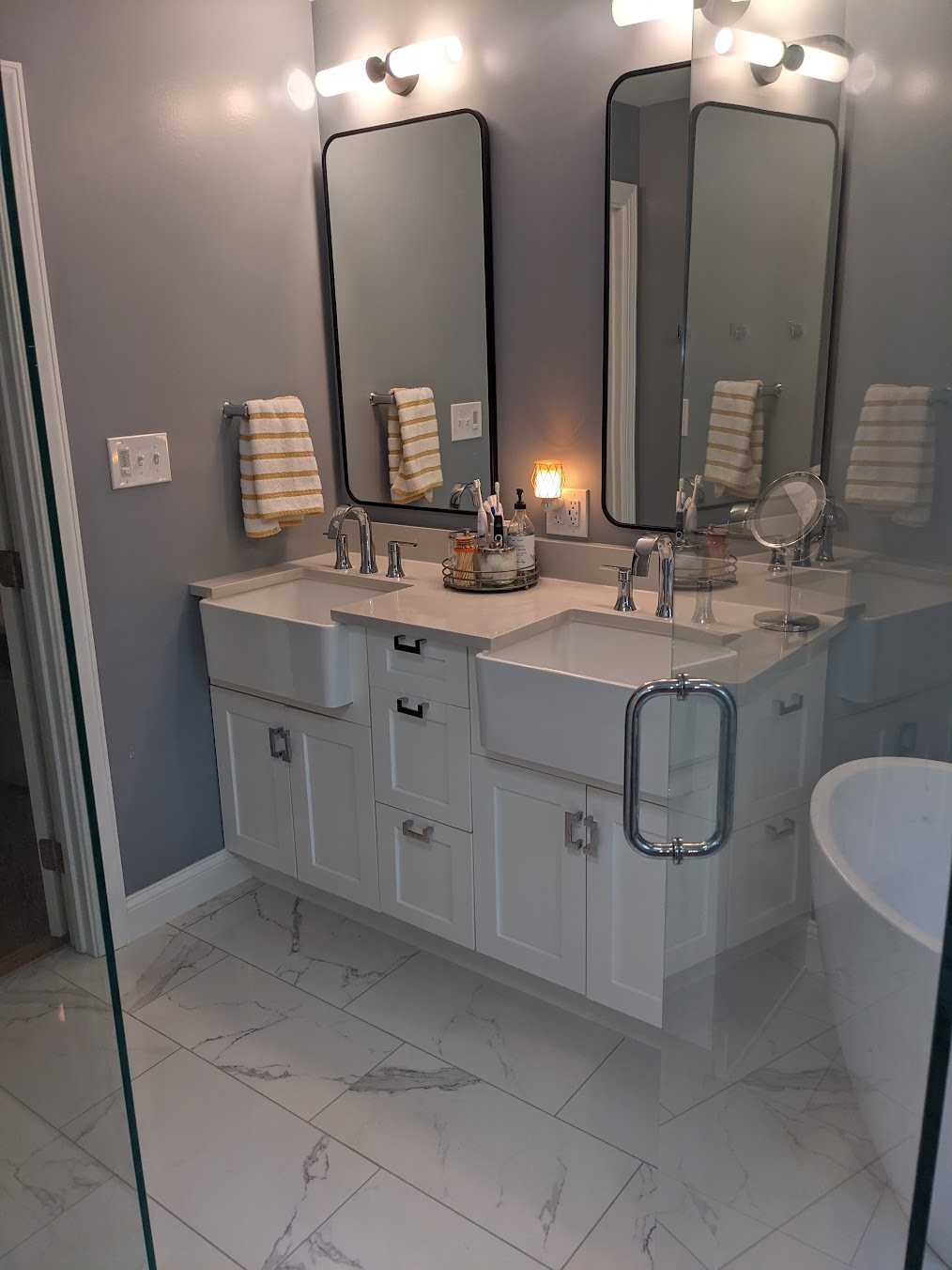
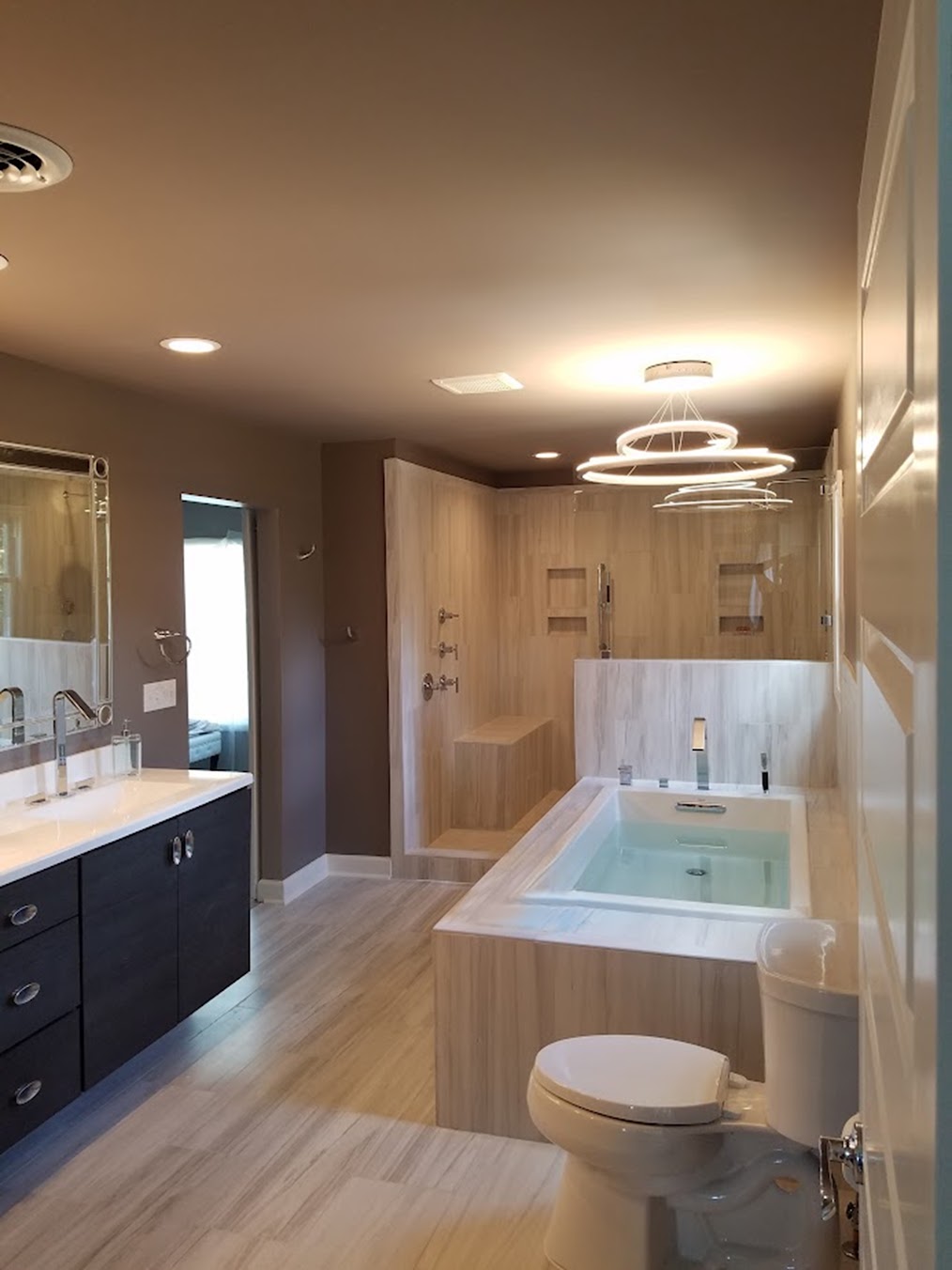
Tub/Shower
The tub or shower is often the centerpiece of a bathroom remodel, setting the tone for both relaxation and daily functionality. Whether you prefer the luxury of a soaking tub, the convenience of a walk-in shower, or a combination of both, choosing the right setup is key to maximizing comfort and style.
Walk-in showers with glass enclosures and tile surrounds are popular for their sleek appearance and ease of access, while freestanding tubs bring elegance and spa-like comfort to the space. For smaller bathrooms, a tub-shower combo can be an efficient and attractive solution that doesn’t compromise on style or practicality.
When deciding on a tub or shower, think about how the space is used, who will be using it, and what features matter most to you—like built-in storage, bench seating, or low thresholds. At Statewide Construction LLC, we help you select and install the perfect solution to suit your needs, space, and design preferences.
Plumbing
Plumbing may be behind the walls, but it plays a crucial role in the comfort, safety, and performance of your remodeled bathroom. Whether you’re relocating fixtures, upgrading old pipes, or adding modern amenities, proper plumbing ensures everything runs smoothly for years to come.
Updating plumbing systems during a remodel is the ideal time to address leaks, improve water pressure, and accommodate new layouts or features like dual vanities, rainfall showerheads, or freestanding tubs. Quality materials and expert installation are key to preventing future issues and maintaining efficiency.
At Statewide Construction LLC, we take the guesswork out of bathroom plumbing. Our licensed professionals ensure all connections are secure, up to code, and ready to support your daily routines—so your bathroom functions as beautifully as it looks.

